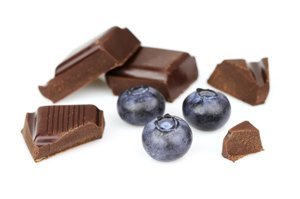 Shared meals are a highlight of the holidays. And while it’s easy to overindulge when there are so many delicious dishes on the table, desserts can be especially easy to overeat.
Shared meals are a highlight of the holidays. And while it’s easy to overindulge when there are so many delicious dishes on the table, desserts can be especially easy to overeat.
- A 2013 study examining how sugar and fat affect regions of the brain related to overeating showed that when it comes to food cravings, sugar has a stronger impact than fat. (1)
With a few simple tips, you can enjoy sweet treats without overdoing it. Avoiding sugar altogether might be an unrealistic option, but with the right “sugar strategy,” you can indulge wisely.
Be smart about sweets — 4 tips
1. Savor the sweet.
Rather than eating a large portion of one — or more — desserts, choose your favorite, and slowly savor each bite. By paying attention and truly enjoying each bite, it’s likely you’ll feel satisfied with a smaller portion.
2. Take time for tea. 
After dinner, and before dessert is served, pour yourself a cup of warm, fragrant tea. You may find that by the time the dessert tray is passed around, you’re content with sipping your soothing cup of tea and don’t desire a heavy, sugar-laden confection. This post-dinner pause also allows your brain time to register how full you are, and taking a tea break may help you realize you simply aren’t hungry for dessert.
3. Choose simple sweets.
Holiday desserts are often decadent, but taking a simple approach can provide a refreshing change. If you’re entertaining, consider preparing an elegant fruit plate with squares of dark chocolate on the side — your guests will be both surprised and delighted at the equally flavorful, yet lighter, option.
4. Be smart about sugar sources.
While sweet treats are part of many people’s holiday traditions, make sure you’re indulging wisely. Sugar-sweetened beverages should stay off the menu, and other highly processed sugary foods should be given the boot.
While treats can be part of a balanced diet, remember to follow The Healthy Eating Plate guidelines for the healthiest meals possible.
References
1. Stice, E., Burger, K.S., Yokum, S. (2013). Relative ability of fat and sugar tastes to activate reward, gustatory, and somatosensory regions. Am J Clin Nutr. 98(6): 1377-84.

